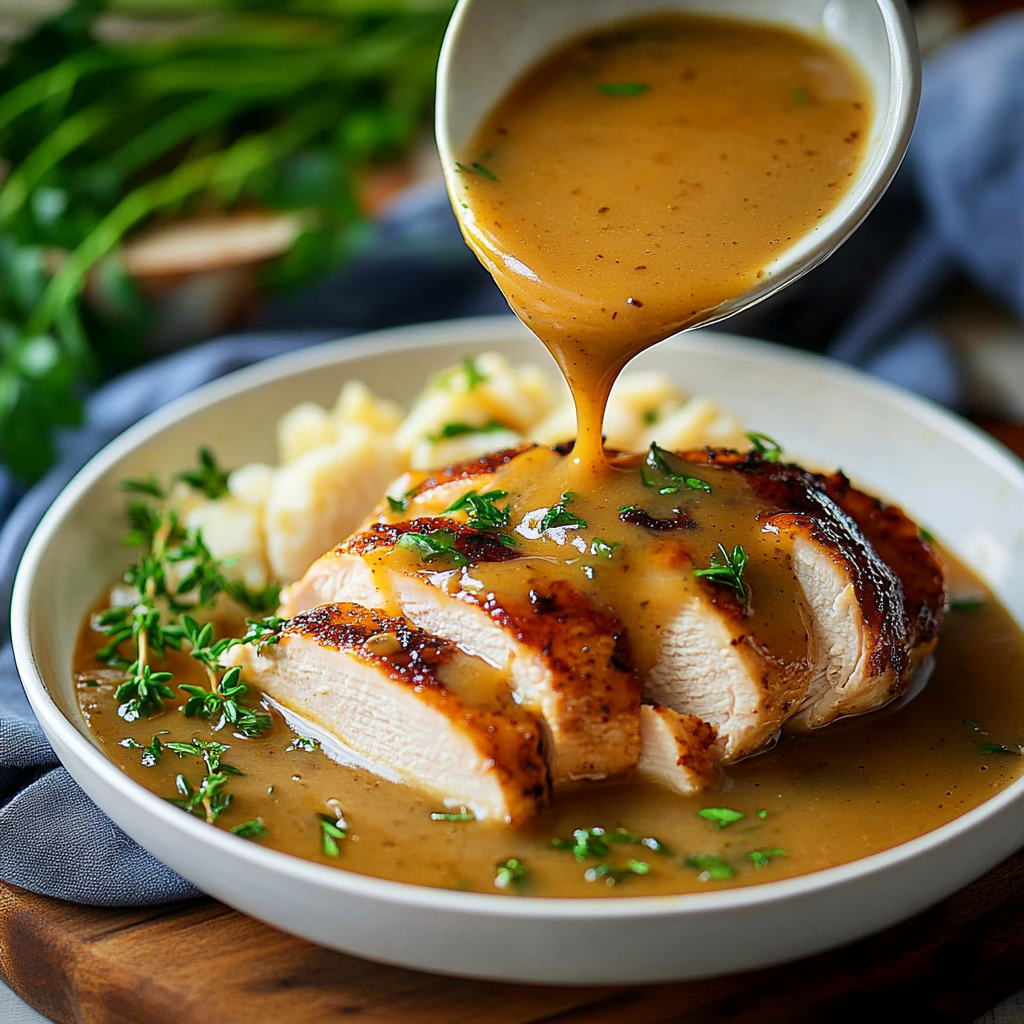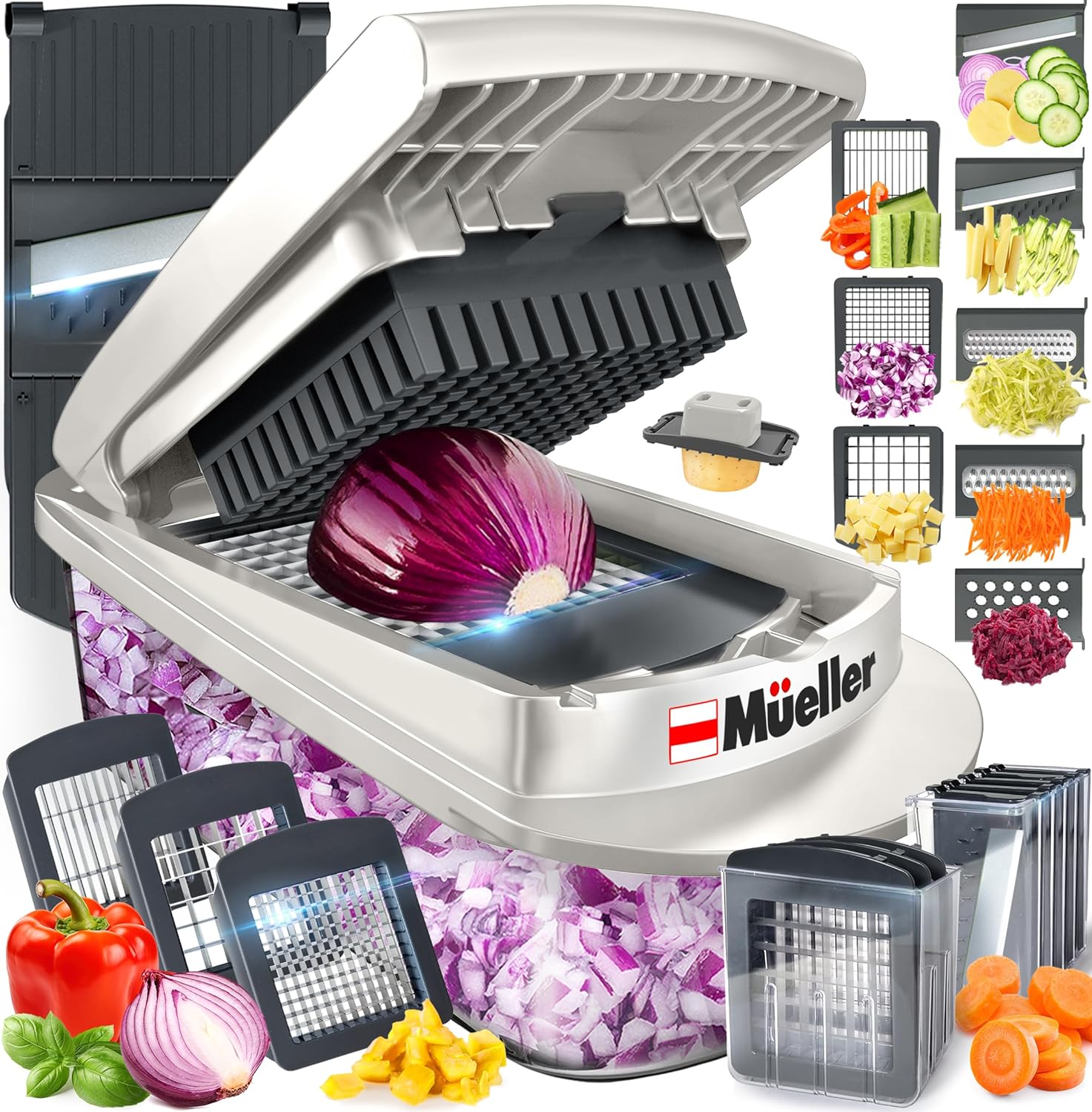Introduction and Quick Summary
Have you ever tasted a gravy so rich and flavorful that it transformed your entire meal? Turkey gravy is that magical finishing touch that elevates dishes from good to unforgettable. Picture a warm bowl of velvety sauce drizzled over tender turkey slices, mashed potatoes, or stuffing—it’s pure comfort food at its finest.

This turkey gravy recipe not only enhances the flavor of your holiday feast but also connects family traditions around the dinner table. I remember the first time I helped my grandmother make her famous turkey gravy; the aroma filled the kitchen, making everyone eager to dig in. With just a few simple ingredients and steps, you can create a homemade sauce that captures the essence of tradition and love. Ideal for Thanksgiving or cozy family dinners, this dish promises satisfaction with every bite.
Why You’ll Love This Turkey Gravy
- Irresistible Flavor: The rich taste of homemade turkey gravy enhances any dish it accompanies. Using drippings from roasted turkey infuses this sauce with an unparalleled depth of flavor that store-bought versions simply can’t match.
- Easy to Make: This recipe simplifies the process of making gravy from scratch. With just a handful of ingredients and straightforward steps, you can whip up a delicious accompaniment to your holiday meals without stress.
- Versatile Pairing: Not just for turkey. This savory sauce pairs beautifully with mashed potatoes, stuffing, or even roasted vegetables. It’s a versatile addition to any meal throughout the year.

Ingredients for Turkey Gravy
Here’s what you’ll need to make this delicious dish:
- Turkey Drippings: Collect drippings from your roasted turkey for authentic flavor; if you don’t have enough, supplement with chicken broth.
- All-Purpose Flour: This is essential for thickening your gravy; use it to create a roux for optimum texture.
- Chicken Broth: Low-sodium broth ensures you can control the saltiness while adding depth to the gravy.
- Salt and Pepper: Season according to taste; start with a little as you can always add more later.
The full ingredients list, including measurements, is provided in the recipe card directly below.
How to Make Turkey Gravy
Follow these simple steps to prepare this delicious dish:
Step 1: Prepare Your Base
Start by pouring the collected turkey drippings into a saucepan over medium heat. Allow it to simmer gently until any solid bits settle at the bottom.
Step 2: Make the Roux
Sprinkle all-purpose flour into the pan while whisking continuously. Cook this mixture for about two minutes until it’s golden brown; this creates a roux that adds thickness and flavor.
Step 3: Add Broth Gradually
Slowly pour in chicken broth while continuing to whisk. This helps prevent lumps from forming in your gravy as you bring everything together.
Step 4: Simmer Until Thickened
Allow the mixture to simmer on low heat for about five minutes or until it reaches your desired thickness. Stir occasionally to ensure even cooking.
Step 5: Season Perfectly
Taste your gravy and season with salt and pepper as needed. Adjust according to your preference—this step enhances all those delicious flavors.
Step 6: Serve Warm
Transfer your finished turkey gravy into a serving bowl and enjoy drizzled over sliced turkey or mashed potatoes for a comforting meal.

Tips and Tricks
Here are some helpful tips to ensure the best results for your dish:
- Use Fresh Ingredients: Whenever possible, opt for fresh herbs or high-quality broth; these elevate the flavors significantly.
- Control Thickness: If your gravy is too thick, add more broth until you achieve your desired consistency; if too thin, continue simmering it down.
- Save Leftovers: Store any leftover turkey gravy in an airtight container in the fridge for up to three days; reheat gently before serving again.
Mistakes to avoid
- Using Cold Broth: One common mistake when making turkey gravy is starting with cold broth. Cold liquids can cause the fat and flour mixture to seize up, resulting in a lumpy texture. Always heat your broth before adding it to your roux. This helps maintain a smooth consistency. Warm broth integrates well and allows for a more velvety gravy. Heating the broth prior to use ensures that you achieve that perfect silky texture.
- Overcooking the Roux: Another frequent error is overcooking the roux. When making turkey gravy, you need to cook the flour until it’s just golden, not brown. Overcooking can give your gravy an undesired flavor and dark color. Aim for a light golden hue when cooking the butter and flour mixture. This step is crucial as it influences both the flavor and appearance of your turkey gravy.
- Skipping Seasoning: Failing to season adequately is a mistake that many home cooks make when preparing turkey gravy. While drippings contribute flavor, relying solely on them can lead to blandness. Always taste your gravy as you prepare it and adjust with salt, pepper, or herbs like thyme or sage for depth of flavor. A well-seasoned turkey gravy enhances your meal and elevates the overall dining experience.
Serving Suggestions
This Turkey Gravy is versatile and pairs wonderfully with:
- Mashed Potatoes: A classic pairing, the creamy texture of mashed potatoes complements the rich flavors of turkey gravy beautifully. Pour the gravy over a generous serving for a comforting side dish.
- Stuffing: Enhance your stuffing experience by drizzling turkey gravy over it. The savory notes of the gravy will elevate this traditional dish, making it even more delicious.
- Roasted Vegetables: For a healthier option, serve turkey gravy with roasted vegetables. The earthy flavors of carrots, Brussels sprouts, or sweet potatoes will balance perfectly with the gravy’s richness.

FAQs
How can I thicken my Turkey Gravy?
If your turkey gravy turns out too thin, there are several methods to thicken it. One common technique is to create a roux by mixing equal parts flour and butter in a pan over medium heat. Cook this mixture until golden brown and then gradually whisk in your gravy. Alternatively, cornstarch mixed with cold water can also be added to the simmering gravy to thicken it without altering the flavor significantly. Always ensure to stir continuously to avoid lumps.
Can I make Turkey Gravy ahead of time?
Absolutely. You can prepare turkey gravy ahead of time and store it in the refrigerator for up to three days. To reheat, simply warm it on the stove over low heat, stirring frequently. You may need to add a splash of broth or water to restore its original consistency. Making your gravy in advance can save you valuable time during holiday meals or family gatherings.
What can I do with leftover Turkey Gravy?
Leftover turkey gravy is incredibly versatile and can be used in various dishes. Consider using it as a base for soups or stews, or mix it into casseroles for added flavor. You can also use it as a sauce for pasta or rice dishes, enhancing their taste while minimizing food waste. Get creative and let your leftover turkey gravy shine.
Can I freeze Turkey Gravy?
Yes, you can freeze turkey gravy. Allow it to cool completely before transferring it into airtight containers or freezer bags. Label them with the date and type of contents. Frozen turkey gravy typically lasts up to four months in the freezer. When you’re ready to use it, thaw in the refrigerator overnight before reheating on the stove.
Conclusion for Turkey Gravy
In summary, creating delicious turkey gravy enhances any meal, especially during festive occasions like Thanksgiving. With simple ingredients such as pan drippings, broth, and seasonings, you can whip up this flavorful sauce effortlessly. Remember that serving suggestions like mashed potatoes and stuffing elevate its appeal further. Plus, knowing how to thicken and store leftovers ensures you get the most out of your homemade creation. Enjoy experimenting with this versatile recipe and make every meal memorable with rich and savory turkey gravy.
Easy Turkey Gravy Recipe
Turkey gravy is the ultimate comfort food that transforms any meal into a feast. This easy recipe captures the rich flavors of roasted turkey drippings, creating a velvety sauce perfect for drizzling over turkey, mashed potatoes, or stuffing. With just a few simple ingredients and straightforward steps, you can make homemade turkey gravy that not only enhances your holiday spread but also brings warmth and nostalgia to your family gatherings. Elevate your Thanksgiving dinner or cozy family meals with this delicious turkey gravy that promises satisfaction in every bite.
- Prep Time: 10 minutes
- Cook Time: 10 minutes
- Total Time: 20 minutes
- Yield: Approximately 4 servings
- Category: Sauce
- Method: Stovetop
- Cuisine: American
Ingredients
- Turkey drippings (or chicken broth)
- All-purpose flour
- Low-sodium chicken broth
- Salt
- Pepper
Instructions
- Pour turkey drippings into a saucepan over medium heat, allowing it to simmer until solids settle.
- Whisk in all-purpose flour and cook for 2 minutes until golden brown.
- Gradually add low-sodium chicken broth while whisking continuously to avoid lumps.
- Simmer on low heat for about 5 minutes until thickened, stirring occasionally.
- Season with salt and pepper to taste.
- Serve warm over your favorite dishes.
Nutrition
- Serving Size: 1/4 cup (60g)
- Calories: 50
- Sugar: 0g
- Sodium: 150mg
- Fat: 3g
- Saturated Fat: 1g
- Unsaturated Fat: 2g
- Trans Fat: 0g
- Carbohydrates: 6g
- Fiber: 0g
- Protein: 1g
- Cholesterol: 0mg
Keywords: For added flavor, consider incorporating fresh herbs like thyme or sage. If the gravy is too thick, add more broth; if too thin, continue simmering until it reaches the desired consistency.


